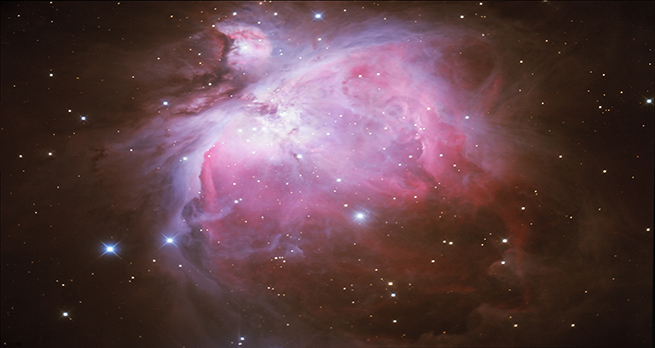Orion Glossary
frequency(of a wave) The number of complete cycles of a wave that pass a certain fixed point in a unit of time. Conventionally measured in the SI unit of hertz, Hz (or, equivalently, s−1). It is equal to one over the period of the wave, and is related to the wavelength λ and the speed of a wave, ν, by ν = fλ. |
galaxyA vast assembly of dark matter and luminous matter, typically tens of thousands of light years in diameter and containing billions of stars, held together by the mutual gravitational attraction of its constituents. Our own galaxy, known as the Milky Way or simply the Galaxy, is a typical spiral galaxy with a mass about a hundred billion times that of the Sun. |
galaxy clusterA gathering of galaxies in a region of space typically 12 to 15 million light years across. Some clusters have many members ('rich' clusters) but sparse clusters, with fewer than 50 members, are termed 'groups'. |
gas giantA planet considerably larger than the Earth, composed largely of hydrogen and helium. Also called giant planet (cf. terrestrial planet). |
Giant Molecular CloudA dense cloud of cold dust and gas within which stars form, extending for many billions of kilometres and typically containing more than a million solar masses of material. |
giant planetA planet considerably larger than the Earth, composed largely of hydrogen and helium. Also called gas giant (cf. terrestrial planet). |
globular clusterGlobular clusters are compact, nearly spherical, groups of many thousands or millions of stars found within the galactic halo. The stars in globular clusters are among the oldest in the Galaxy, and so have very low amounts of elements other than hydrogen and helium. |
groupA gathering of galaxies with fewer than 50 members, bound together by gravity (cf galaxy cluster). |
habitable zoneThe range of distances from a star within which an Earth-like planet would be habitable. |
Harvard Spectral ClassificationA commonly used classification scheme for stars by which the temperature of a star is denoted by the assignment of a letter in the sequence OBAFGKM, running from hottest (O) to coolest (M) |
